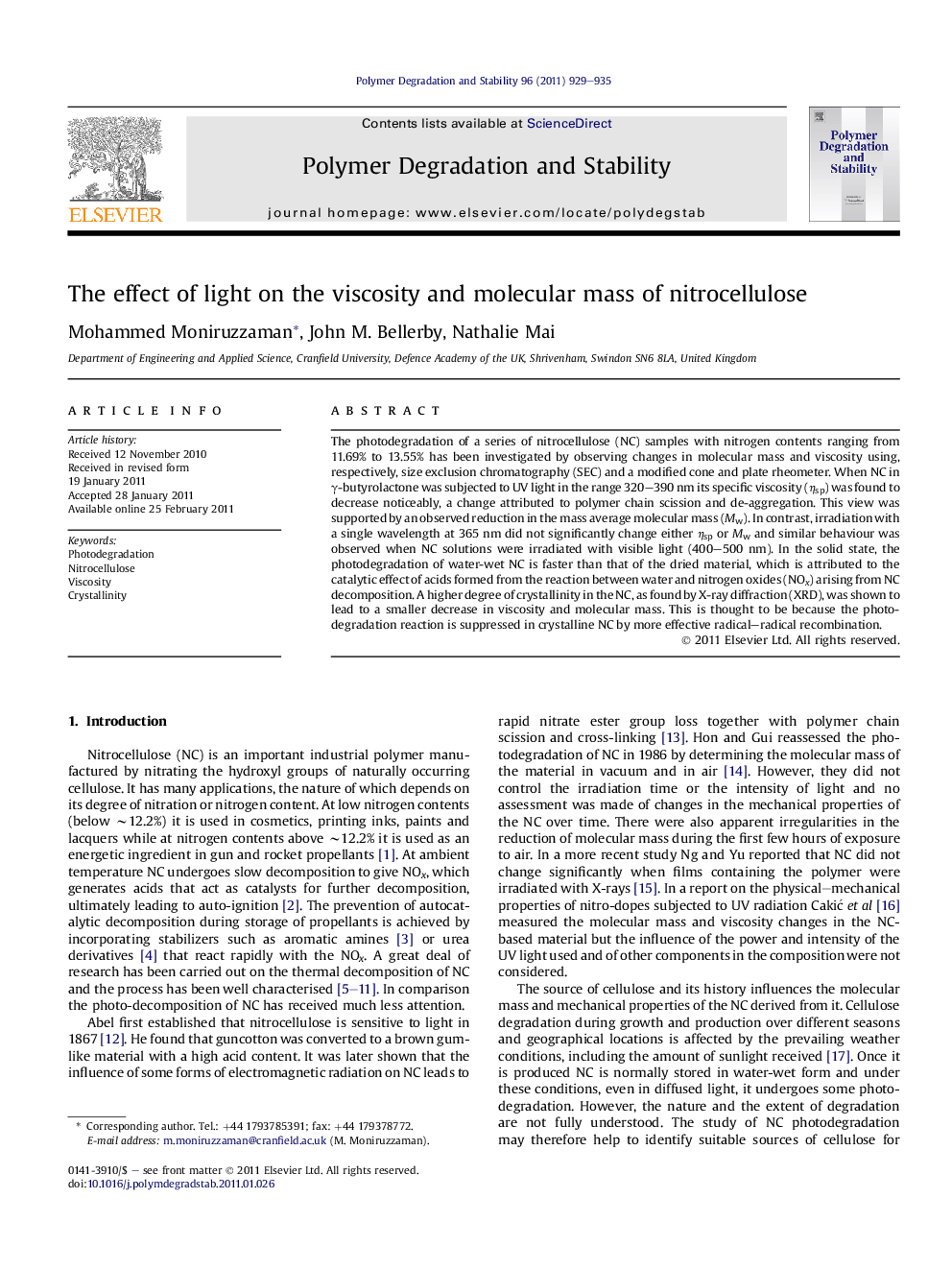| Article ID | Journal | Published Year | Pages | File Type |
|---|---|---|---|---|
| 5202700 | Polymer Degradation and Stability | 2011 | 7 Pages |
Abstract
The photodegradation of a series of nitrocellulose (NC) samples with nitrogen contents ranging from 11.69% to 13.55% has been investigated by observing changes in molecular mass and viscosity using, respectively, size exclusion chromatography (SEC) and a modified cone and plate rheometer. When NC in γ-butyrolactone was subjected to UV light in the range 320-390 nm its specific viscosity (ηsp) was found to decrease noticeably, a change attributed to polymer chain scission and de-aggregation. This view was supported by an observed reduction in the mass average molecular mass (Mw). In contrast, irradiation with a single wavelength at 365 nm did not significantly change either ηsp or Mw and similar behaviour was observed when NC solutions were irradiated with visible light (400-500 nm). In the solid state, the photodegradation of water-wet NC is faster than that of the dried material, which is attributed to the catalytic effect of acids formed from the reaction between water and nitrogen oxides (NOx) arising from NC decomposition. A higher degree of crystallinity in the NC, as found by X-ray diffraction (XRD), was shown to lead to a smaller decrease in viscosity and molecular mass. This is thought to be because the photodegradation reaction is suppressed in crystalline NC by more effective radical-radical recombination.
Related Topics
Physical Sciences and Engineering
Chemistry
Organic Chemistry
Authors
Mohammed Moniruzzaman, John M. Bellerby, Nathalie Mai,
